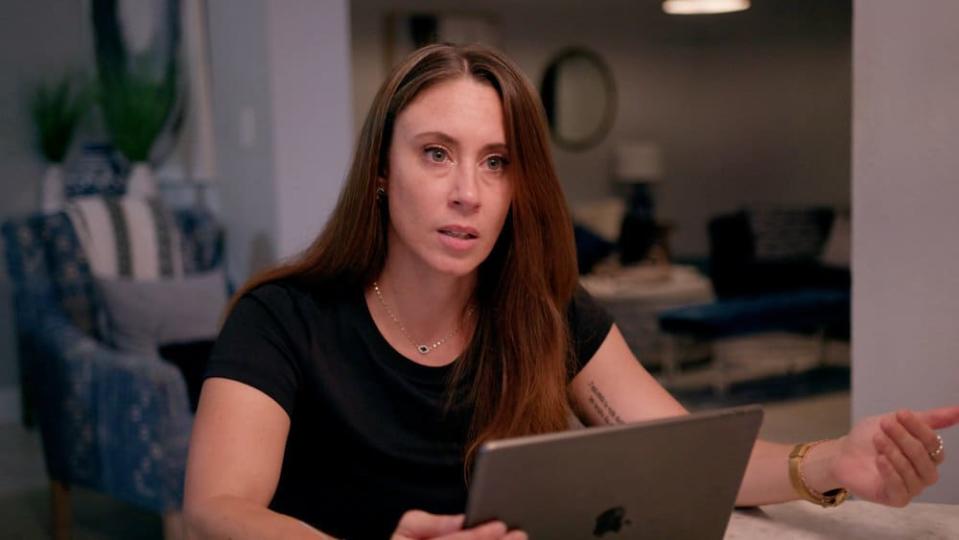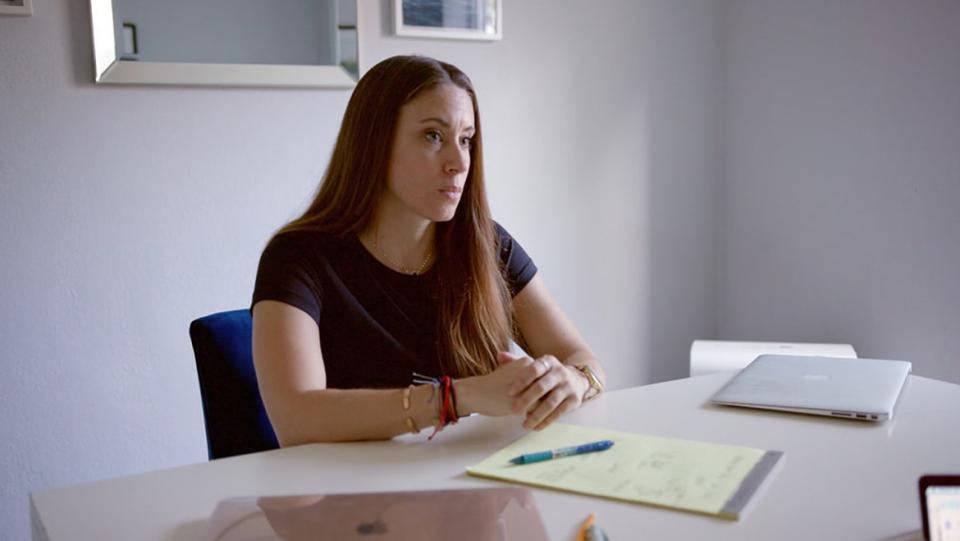‘Casey Anthony: Where the Truth Lies’ Tries, and Fails, to Win Us Over to the Infamous Woman’s Side

In the three-part Peacock docuseries (Nov. 29) Casey Anthony: Where the Truth Lies, the notorious young woman repeatedly and forcefully contends that she had nothing to do with the apparent murder of her two-year-old daughter, Caylee. It’s Anthony’s first TV interview since she was acquitted in 2011. Yet to buy anything that director Alexandra Haggiag Dean’s non-fiction venture is selling—namely, absolving Anthony of responsibility for Caylee's death and pointing the finger at her father George as an incestuous, pedophilic rapist—requires believing Anthony herself. And given her long and well-publicized history of lying, that will probably be a bridge too far for most.
Anthony certainly gives it her all in Where the Truth Lies, crying incessantly and heartily as she proclaims her innocence, her ignorance about what happened to Caylee, and her suspicions about, and eventually accusations against, her dad’s involvement. George (and her brother, Lee) sexually abused her beginning when she was little, according to Anthony. To her mind, the most logical explanation for Caylee’s demise is that George molested and accidentally killed Caylee, dunked her in the family’s backyard swimming pool to cover up his crime, and then disposed of her in the nearby wooded spot where she was found wrapped in duct tape and stashed in a trash bag with her Winnie-the-Pooh blanket. Nothing presented here conclusively incriminates George; there are only Anthony’s statements. Then again, there’s also scant hard evidence implicating Anthony, which is why she wasn’t convicted of first-degree murder; instead, she was found guilty of four misdemeanor instances of providing false information to law enforcement.
Anthony’s case was, as Where the Truth Lies reminds viewers, the first big social media-covered trial, with public opinion shaped by and voiced on online platforms as well as via traditional media outlets. It was a spectacle to rival that of the O.J. Simpson case, and its exonerating outcome generated a similar brand of fury from millions of Americans, who were convinced that Anthony had killed her daughter and then covered it up. That view was largely based on a variety of troubling details, beginning with Anthony’s decision to not report Caylee’s July 2008 disappearance for 31 days. Worse, during that time frame, Anthony was photographed partying with friends, and she also got a tattoo that read “Bella Vita” (i.e. “Beautiful Life”). When her mom, Cindy, finally told authorities that Caylee was missing, Anthony lied about dropping the child off at a non-existent nanny’s house, her place of employment (Universal Studios), and receiving a bogus phone call from Caylee.
Speed Read: ‘Presumed Guilty—Casey Anthony: The Inside Story’
The portrait that emerged was of a twentysomething who had offed her daughter so she could live a fast-and-free single lifestyle, and it’s that notion which Where the Truth Lies tries to counter. Though director Dean makes clear at the outset that Anthony has no editorial control over this project, it’s obviously designed to paint her as a sympathetic and grieving individual who was, and continues to be, wronged at every turn. Through ceaseless waterworks (and bolstered by poignant animated sequences and equally heartstring-tugging music), Anthony makes herself out to be a victim of rape at the hands of her relatives; of a domineering father who “brainwashed” her to lie, then testified against her before a grand jury and in court; of a controlling and cruel mother; of police and prosecutors who sought to nail her for something she didn’t do; and of a society that unjustly vilified her as a filicidal monster.

Casey Anthony in Casey Anthony: Where the Truth Lies.
Casey Anthony: Where the Truth Lies complements the weepy commentary with remarks from a few friends and members of Anthony’s legal team, who are now her surrogate family. Still, while Anthony and others address every puzzling aspect of this tale—from Anthony concocting a phony nanny, to not notifying authorities about her daughter, to her infamous tattoo—they do so in unsuccessful fashion. Anthony’s shady conduct is pinned on long-suppressed sexual assault trauma and the compartmentalization that was her supposed response to Caylee vanishing. As Anthony explains it, she saw George holding a soaking wet and motionless Caylee on the day of her apparent death. But because he said that everything would be okay, Anthony believed that Caylee had just been kidnapped by George, and subsequently kept mum about it all because she’d grown up in a household predicated on ugly secrecy.
Or, you know, something like that. The theories proffered by Where the Truth Lies don’t hold up to much scrutiny, and do little to clear up the numerous inconsistencies in Anthony’s account, much less elucidate why a mother wouldn’t tell a soul, for a month, that her beloved child was MIA. Denial is a familiar and natural response to intense sorrow and suffering, yet it seems a far less authentic reaction to the abduction and possible rape/murder of a two-year-old. Consequently, detectives John Allen and Eric Edwards, who led the investigation into Anthony, remain unmoved by her defense, holding to the fact that Anthony’s deceptions and strange behavior make her the only legitimate suspect.
Texas Killing Fields Murders: New Doc Explores the Years of Horror and Lasting Trauma
Dean primarily foregrounds speakers who have Anthony’s back, as well as Anthony herself. But Anthony’s on-camera histrionics feel performative, especially once she’s bawled for the umpteenth time while looking at old photographs, visiting her childhood home, or watching archival footage. Though some points are open to debate, including George’s weird decisions and statements, it’s borderline impossible to take Anthony seriously in light of her past fabrications and ongoing evasions. She’s a thoroughly unreliable narrator of a narrative that she’s been crafting for more than a decade, and Casey Anthony: Where the Truth Lies proves merely an articulation of that version of events, decorated in #MeToo-era buzzwords and rife with insinuations as flimsy as its subject’s tears are plentiful.
In the end, that makes Peacock’s docuseries akin to O.J.’s If I Did It—a transparent rehabilitation project that will likely persuade few and infuriate many.
Get the Daily Beast's biggest scoops and scandals delivered right to your inbox. Sign up now.
Stay informed and gain unlimited access to the Daily Beast's unmatched reporting. Subscribe now.

 money
money 